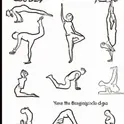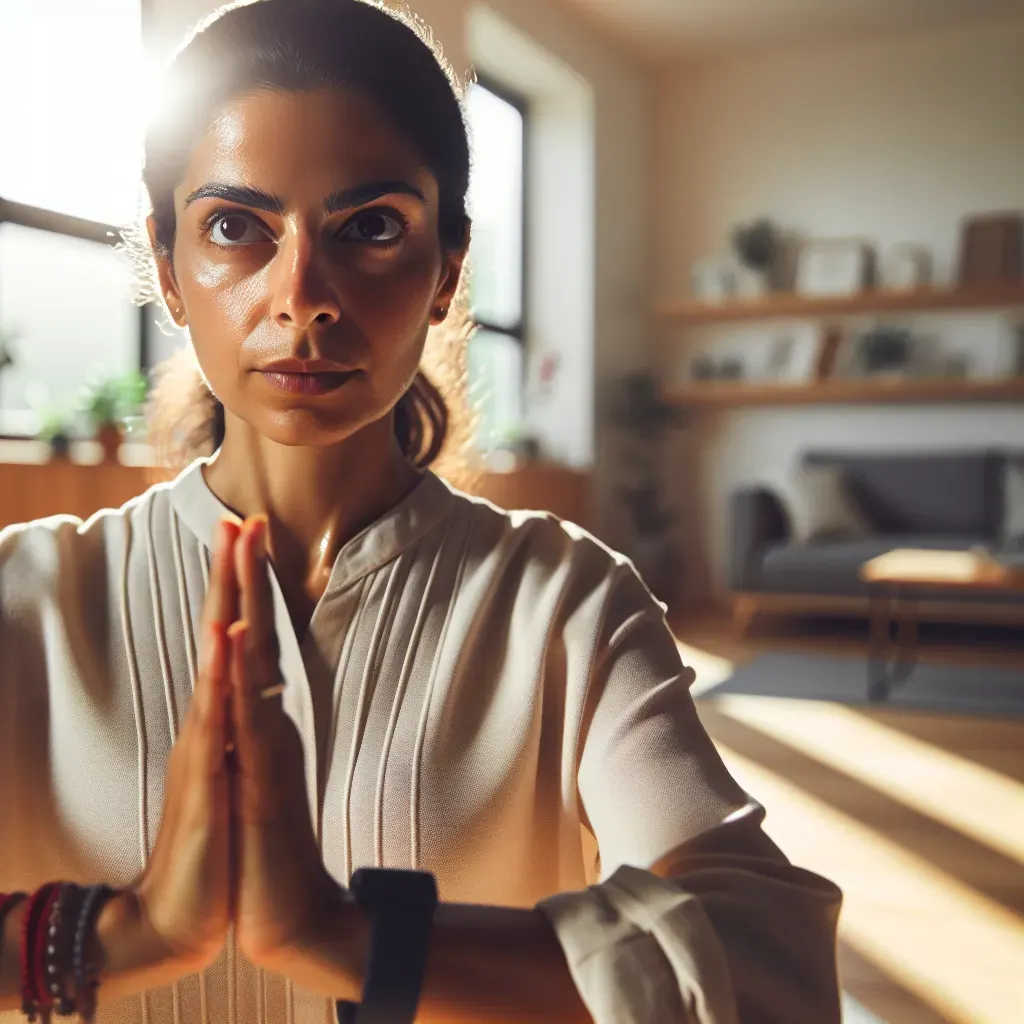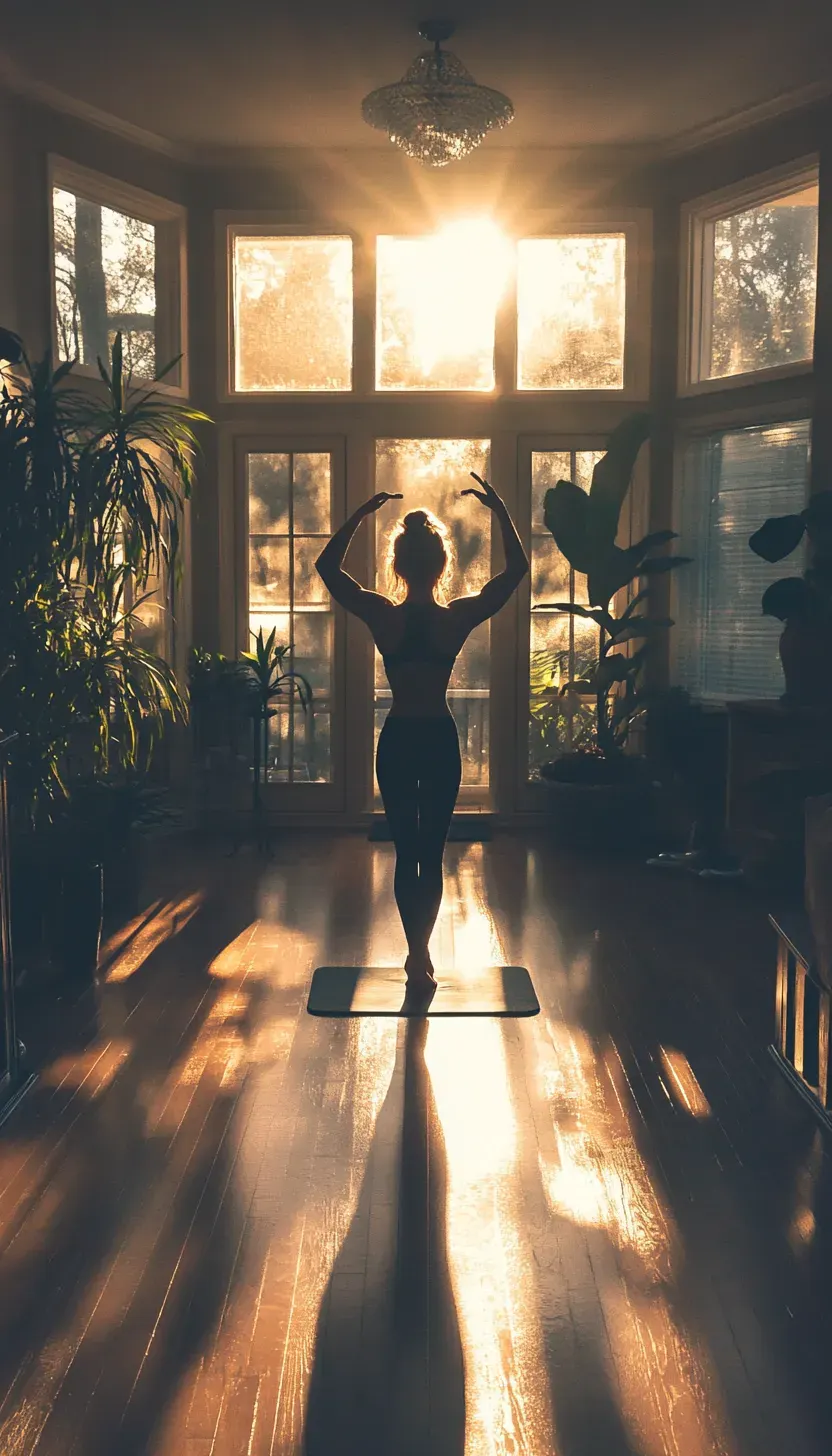Enhance Your Range Of Motion: Basic Yoga Poses For Flexibility
Hey there, fellow seeker of flexibility! Do you feel like you're made of rubber bands that have seen better days? You stretch, strain, and sweat, but your range of motion still feels as limited as a goldfish in a bowl. I've been there. Trust me, I get it.
You might be thinking, "Why bother? Yoga's just a fancy way to twist yourself into a pretzel, and I'm about as flexible as a plank of wood." But hold up – before you dismiss the idea entirely, let's hit pause and rewind for a moment.
Sure, those basic yoga poses might seem like something only contortionists or Instagram influencers can pull off effortlessly. But guess what? You don't need to be a guru or a gymnast to reap the benefits. You don't even need to touch your toes on the first try (or ever, really).
I know, I know – you've probably tried everything under the sun, from static stretches to chanting mantras under a full moon. But here's the deal: basic yoga poses for flexibility might just be the secret sauce you've been missing.
So, if you're ready to ditch the stiffness and embrace your inner noodle, let's dive in and discover how these simple poses can help you enhance your range of motion – no pretzel impersonations required. Let's begin.
Conventional Approaches To Yoga For Flexibility
Ever tried to touch your toes only to feel like you're about to pull a muscle? Yeah, we've all been there. Conventional yoga approaches for flexibility often leave us feeling more like rigid boards than graceful dancers. So what's the deal with these traditional methods?
Static Stretching:
You know those stretches where you hold a pose and pray for mercy? That's static stretching for you. Picture this: you're sitting on the floor, reaching for your toes, and wondering if your hamstrings are made of steel cables.
But here's the kicker – holding a stretch for ages might give you a temporary feeling of length, but it doesn't teach your muscles to be more flexible in the long run. It's like trying to straighten out a crumpled paper – it might look smooth for a moment, but the creases are still there.
Limited Effectiveness:
Static stretching might seem like the holy grail of flexibility, but let's face it – it's about as effective as using a toothpick to build a house. You stretch and stretch, but your range of motion stays stubbornly the same. It's like trying to expand a balloon by blowing into it with a straw – you might get a tiny bit of air in, but it's not gonna make much of a difference.
Potential for Injury:
Now, let's talk about the elephant in the room – the risk of injury. When you push your body into static stretches without proper warm-up or awareness, you're playing a game of Russian roulette with your muscles.
It's like trying to run a marathon without training – sure, you might make it to the finish line, but you're likely to pull a hamstring or two along the way.
The Limitations Of Conventional Yoga Practices
So why do these traditional approaches fall short when it comes to unlocking our inner rubber bands? Let's break it down.
Lack of Muscle Activation:
One of the biggest culprits is the lack of muscle activation in static stretching. When you hold a pose without engaging your muscles, it's like trying to lift a heavy box with spaghetti arms – you're just not gonna get very far. Without activating the muscles around the target area, you're missing out on the support and stability needed to deepen your stretch safely.
Ignoring Individual Body Mechanics:
Another issue is the one-size-fits-all approach to traditional yoga practices. Have you ever been in a class where everyone seems to effortlessly fold themselves in half while you're struggling to touch your toes? Yeah, it's not exactly a confidence booster.
The thing is, we all have different body mechanics and limitations. What works for one person might not work for another. It's like trying to fit a square peg into a round hole – it's just not gonna happen.
Underestimating the Role of Breath:
And let's not forget about the breath. In traditional yoga classes, breathwork often takes a backseat to asanas (poses). But here's the thing – your breath is like the conductor of an orchestra, guiding the flow of movement and energy throughout your body.
When you neglect the breath, it's like trying to drive a car without a steering wheel – you're gonna end up going in circles.
Risk of Overstretching:
Last but not least, there's the risk of overstretching. When you push your body beyond its limits in a static stretch, you're treading dangerous waters. It's like trying to bend a tree branch until it snaps – sure, you might get a bit of extra flexibility at the moment, but at what cost? Overstretching can lead to injuries like strains, sprains, and even tears, putting a serious damper on your flexibility goals.
Introducing A New Method: Dynamic Yoga For Flexibility
So what's the alternative? Enter dynamic yoga – the game-changer you never knew you needed. Dynamic yoga flips the script on traditional approaches by emphasizing movement, breath, and muscle engagement. But how exactly does it work?
Engaging Muscles Throughout:
Unlike static stretching, dynamic yoga keeps your muscles on their toes (pun intended) by incorporating movement into your stretches. Instead of holding a pose statically, you flow through a sequence of movements that gently lengthen and strengthen your muscles.
It's like giving your muscles a wake-up call – they're suddenly alive and kicking, ready to take on whatever challenges come their way.
Gradual Increase in Range of Motion:
But here's the beauty of dynamic yoga – it's all about gradual progression. Instead of forcing your body into extreme stretches, you move slowly and mindfully, gradually increasing your range of motion over time. It's like building a bridge – each movement lays down another plank, slowly but surely spanning the gap between where you are and where you want to be.
Mindful Breathing Support:
And let's not forget about the breathwork. In dynamic yoga, every movement is synchronized with your breath, creating a seamless flow of energy throughout your body. It's like riding a wave – you're carried effortlessly forward, buoyed by the rhythm of your breath.
By syncing your breath with your movements, you not only enhance your flexibility but also cultivate a sense of calm and presence.
Targeted Sequences for Flexibility:
But perhaps the best part of dynamic yoga is the tailored approach to flexibility. Instead of throwing you into the deep end and hoping for the best, dynamic yoga offers targeted sequences designed to address specific muscle groups and areas of tightness. It's like having a personal trainer in your pocket, guiding you step by step towards your flexibility goals
.
Advantages Of Dynamic Yoga For Flexibility
So why should you ditch the static stretches and give dynamic yoga a try? Let's break it down.
Active Muscle Engagement:
First and foremost, dynamic yoga promotes active muscle engagement, providing stability and support as you deepen your stretches. It's like having a spotter at the gym – you feel confident pushing your limits knowing that someone has your back. By engaging your muscles throughout your practice, you not only enhance your flexibility but also reduce the risk of injury.
Gradual Progression:
But here's the kicker – dynamic yoga allows for gradual progression, ensuring that you don't push your body beyond its limits. It's like climbing a mountain – you take one step at a time, enjoying the journey as much as the destination. Instead of forcing your body into extreme poses, you move with intention and awareness, honouring your body's needs every step of the way.
Breathwork Integration:
And let's not forget about the breath. In dynamic yoga, breathwork isn't just an afterthought – it's an integral part of the practice. By syncing your breath with your movements, you not only enhance your flexibility but also cultivate a deep sense of relaxation and presence.
It's like taking a deep breath of fresh air – you feel revitalised and rejuvenated, ready to take on whatever challenges come your way.
Individualised Approach:
But perhaps the greatest advantage of dynamic yoga is its individualized approach. Instead of following a one-size-fits-all routine, you have the flexibility to tailor your practice to your unique needs and goals.
It's like having a custom-tailored suit – it fits you like a glove, accentuating your strengths and supporting your weaknesses. Whether you're a beginner or a seasoned yogi, dynamic yoga offers something for everyone, ensuring that you can progress at your own pace.
Addressing Counterarguments
But wait – you might still have some doubts lingering in the back of your mind. Let's address them head-on.
Concerns About Effectiveness:
You might be thinking, "But is dynamic yoga as effective as static stretching?" The answer might surprise you. While static stretching has its time and place, numerous studies have shown that dynamic movements can be just as effective, if not more so, at improving flexibility. It's like comparing a sprinter to a marathon runner – both have their strengths, but it's the sprinter who crosses the finish line first.
Scepticism About Accessibility:
And what about accessibility? You might worry that dynamic yoga is too advanced or too intimidating for beginners. But fear not – dynamic yoga can be modified and adapted to suit any fitness level or experience.
It's like learning to ride a bike – you start with training wheels and gradually build confidence as you find your balance. With the right guidance and support, anyone can reap the benefits of dynamic yoga, regardless of their starting point.
Criticism of Time Commitment:
And then there's the issue of time commitment. You might wonder if dynamic yoga requires hours of practice each day to see results. But here's the truth – even just a few minutes of dynamic movement can make a world of difference.
It's like watering a plant – you don't need to drench it in water to help it grow, just a little bit of nourishment each day goes a long way. With short, targeted sequences, you can integrate dynamic yoga into your daily routine with ease, making flexibility enhancement a breeze.
Unlock Your Potential: Embrace The Journey To Flexibility
Feeling a bit sceptical, aren't you? Wondering if all this talk about basic yoga poses for flexibility is just another gimmick? Hey, I get it. You've tried it all – static stretching, contorting yourself into impossible positions, and maybe even throwing in a few choice words when it didn't quite work out.
But here's the thing – you're not alone in this journey. We've all been there, feeling like our bodies are as flexible as a rusty door hinge. But guess what? There's hope, my friend. There's a light at the end of the tunnel, and it's called dynamic yoga.
So let's do a quick recap, shall we? Static stretching might give you a temporary sense of relief, but it's like putting a band-aid on a broken bone – it's not gonna fix the problem.
And those traditional yoga classes? They're like trying to fit a square peg into a round hole – it's just not gonna work for everyone. But dynamic yoga? Now that's where the magic happens.
Think of dynamic yoga as your cheerleader, cheering you on as you take each step towards greater flexibility. With active muscle engagement and gradual progression, you'll soon find yourself bending and twisting with the grace of a seasoned yogi. And let's not forget about the breath – your faithful companion on this journey, guiding you through each movement with ease and grace.
So why wait? Why settle for stiffness and rigidity when you could be flowing with grace and ease? Leap, my friend. Embrace the journey to flexibility and discover the transformative power of dynamic yoga for yourself.
Your body will thank you, your mind will thank you, and heck, even your spirit will thank you. So go ahead – roll out your mat, strike a pose, and let's embark on this journey together. You've got this.
People Also Asked
1. What are the benefits of yoga for improving flexibility?
Yoga helps improve flexibility by stretching and strengthening muscles, increasing joint mobility, and enhancing overall body awareness and alignment.
2. Do I need to be flexible to start practising yoga?
No, yoga is suitable for people of all fitness levels and body types. Beginners can start with basic poses and gradually progress as their flexibility improves over time.
3. How often should I practice yoga to see improvements in flexibility?
Consistency is key. Aim to practice yoga at least 2-3 times per week to see noticeable improvements in flexibility. Regular practice allows your body to adapt and become more supple over time.
4. Are there specific yoga poses that are best for increasing flexibility?
Yes, certain yoga poses are particularly effective for enhancing flexibility, such as forward folds, hip openers, spinal twists, and hamstring stretches. Incorporating a variety of poses into your practice can target different areas of tightness and improve overall flexibility.
5. Can yoga help alleviate stiffness and joint pain?
Yes, yoga can help relieve stiffness and joint pain by gently stretching and mobilizing tight muscles and connective tissues. Practising yoga regularly can also improve circulation and promote relaxation, which may reduce discomfort associated with stiffness and inflammation.
6. How long should I hold each yoga pose to improve flexibility?
It's recommended to hold each yoga pose for 30 seconds to 1 minute, gradually deepening the stretch as you feel more comfortable. Avoid bouncing or forcing your body into a stretch, and remember to breathe deeply and mindfully throughout each pose.
7. Is it normal to feel sore after practising yoga for flexibility?
Yes, it's normal to experience mild muscle soreness, especially if you're new to yoga or trying different poses that target tight areas. Soreness typically subsides within a day or two and can be alleviated with gentle stretching, rest, and hydration.
8. Can I modify yoga poses if I'm not flexible enough to perform them fully?
Absolutely! Yoga poses can be modified to accommodate individual flexibility levels and limitations. Use props like blocks, bolsters, or straps to support your body and ease into poses gradually. Listen to your body and honour its boundaries to prevent injury.
9. Will practicing yoga for flexibility help with stress and relaxation?
Yes, yoga is renowned for its stress-relieving benefits. The combination of mindful movement, deep breathing, and relaxation techniques can help calm the mind, reduce stress hormones, and promote a sense of inner peace and well-being.
10. How long does it take to notice improvements in flexibility with yoga?
The timeframe for seeing improvements in flexibility varies from person to person and depends on factors such as consistency of practice, body type, and starting level of flexibility. Some people may notice improvements within a few weeks, while others may take longer. The key is to stay patient, stay consistent, and enjoy the journey of self-discovery and growth through yoga practice.





